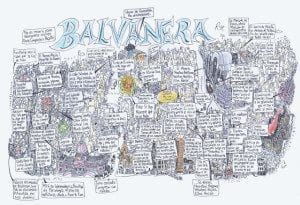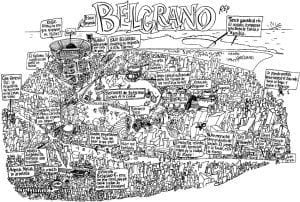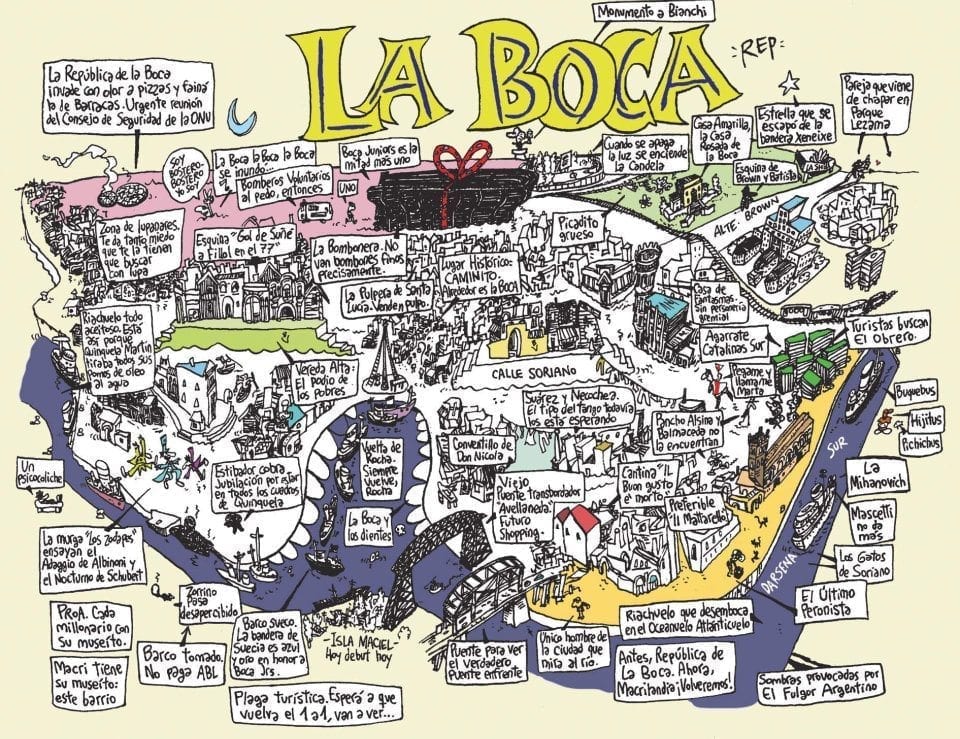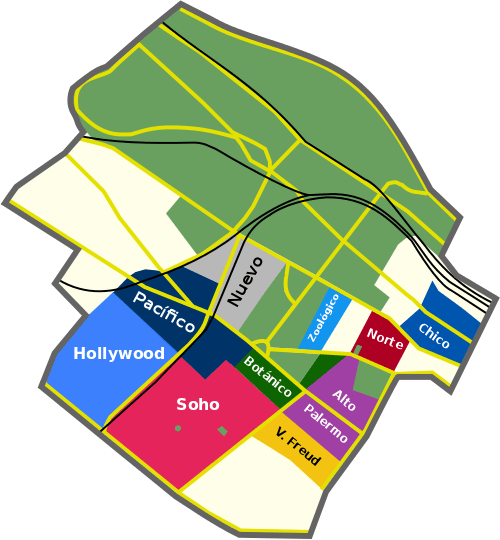When reading about Buenos Aires, you’re certain to have come across names such as “Barrio Norte” or “Once” – but then when you go to locate them on a map, you can’t find any reference to them. Buenos Aires officially has 48 neighborhoods (barrios in Spanish), but there are another 48 (give or take) that you’ll never find mentioned on a map. While I won’t mention every single one (so don’t try to count, you’ll be disappointed), here’s a breakdown of what’s going on with the names of the many official and unofficial barrios (or sub-neighborhoods) of Buenos Aires.
Don’t forget to also check out 100 Barrios Part 2, where we’ll dissect the most popular and the biggest neighborhood of Buenos Aires – Palermo.
The earliest neighborhoods took their names from the parishes in that area, for example Monserrat, San Nicolás (the official name of the area called “Microcentro” or Downtown), and San Telmo. These neighborhoods had their physical limits and names defined in 1972 and appear on all of the maps; Puerto Madero and Parque Chas were later added to this list as well.
As I mentioned, San Nicolás is more or less the area called “Microcentro”, sandwiched in above the Casa Rosada and the Plaza de Mayo and below Retiro. It also covers an area popularly called “Tribunales” (on the western side of Av. 9 de Julio)- this is where the Palacio de Justicia (Supreme Court) as well as many lawyers are located. With “Microcentro” on one side and “Tribunales” on the other, you rarely need to refer to it by its official name.
After the same fashion as San Nicolás, Balvanera is also an official neighborhood, 

You’ll notice that prominent landmarks are a very common source of names among unofficial neighborhoods (“Congreso”, “Tribunales“, “Facultad de Medicina“, etc.). Up in Nuñez, there’s a micro-neighborhood called “River”, located right next to the River Plate Stadium. And there’s also an area called “La Imprenta” in Palermo where the printing house (imprenta) of the Jockey Club used to be located (at Migueletes 800).
Parks or plazas have lent their names to areas such as “Parque Centenario” and “Primera Junta” within the Caballito neighborhood. Some other sub-neighborhoods get their names according to the apartment buildings, housing complexes and municipalities that are constructed there.


Another trend in naming comes from the groups that populate the area, such as “Barrio Chino” in Belgrano (just like “China Town” in other major cities) as well as a “Barrio Coreano” in the southern part of the Flores neighborhood.
Perhaps the most amusing is the names that have been changed by real estate agents hoping to make a profit. While I’ve never witnessed this myself, apparently some bars in the Retiro neighborhood, not known for being a particularly nice area, christened the area “el Nuevo Bajo“. Even better is the intention of renaming Villa Crespo as “Palermo Queens” – in hopes that the Palermo name would make the property sound more desirable. By the way, Palermo is also the area where our Spanish School in Buenos Aires is located.
https://www.youtube.com/watch?v=P2TGQ8ZGWY0
Relative geographic location is another source, such as “Centro“, “Bajo (Lower) Belgrano“, and “Bajo (Lower) Flores“. “Barrio Norte” in particular is a famous one. It occupies most of Recoleta and Retiro, and earned its name towards the end of the 19th century when yellow fever was spreading throughout the southern neighborhoods of the city, “Barrio Sur” (approximately around Monserrat and San Telmo). The rich families who could afford to leave the area moved north to “Barrio Norte” (the northern neighborhood). It’s not uncommon to see restaurants and stores list their location as “Barrio Norte”, even though they’re technically in Recoleta.
https://www.youtube.com/watch?v=nFpCRAahiZA
That wraps up the many and varied neighborhood names in Buenos Aires – so the next time you hear someone telling you about a place that you can’t find on a map, you’ll know why!
Note: Pictures credit goes to renowned Argentine artist Miguel A. Repiso. These drawings are from his book ‘Y Rep Hizo Los Barrios Buenos Aires Dibujada’. Look for it in a bookstore when you are in the city, it’d make an awesome souvenir! To see more of Rep’s signature work, visit his website at www.miguelrep.com.ar.





